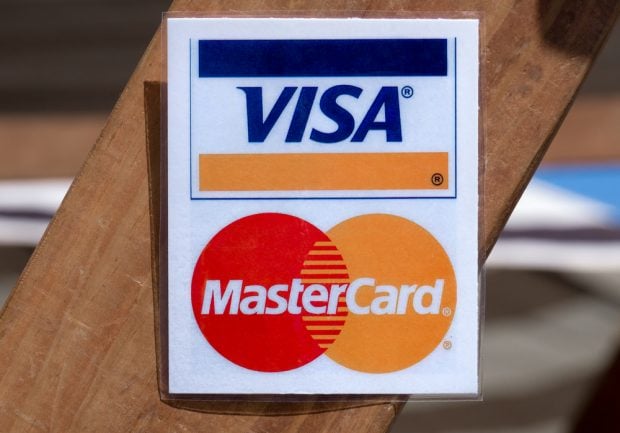A new association of smaller, independent ATM deployers mayprovide credit unions with an additional ally on certain ATMregulatory fights, according to an executive with the new tradegroup.
|The National ATM Council is a cooperative effort of the National Association of ATM ISOs andthe Alliance of Specialized Communications Providers. Its membershope organizations which members hope to use it to highlight issuesthat they felt have not gotten sufficient attention, according tothe group's new Executive Director Bruce Renard.
|The new association claims that it will represent the majorityof independent (nonfinancial institution) ATM deployers in the U.Sand that they deploy roughly half the nation's ATMs.
|“Formation of NAC is a significant event in the history andevolution of the dynamic ATM industry,” said Curt Selman of SelmanTelecommunications Investment Group LLC, the group's firstchairman. “As small businesses, independent owners of ATMs in theUnited States face challenging times. Our industry requires anorganization focused on promoting the interests of the nation'sindependent ATM owners and ensuring the continued widespreadavailability of independent ATM locations for the convenience ofthe American consumer. The unification of NAAIO and ASCP to formNAC is a significant step in achieving this focus. With thecombined resources and leadership of ASCP and NAAIO, and thesupport of our member companies and constituents, I am confidentthat NAC and each of its business councils will make a positiveimpact for all our member companies, suppliers and the public weserve.”
|The group is also notable for the organization that is not inits leadership. Cardtronics, the nation's largest independent ATMdeployer and owner of the Allpoint Network, is not among theorganizations represented on the group's first board of directors,according to the association.
|“NAC represents the realization of a long-term goal to create astrong and broad-based trade organization devoted to furthering theinterests of independent ATM businesses throughout the nation–whilealso promoting the important benefits that our sector's more than200,000 ATMs provide to the American public,” said Jim Cabe of Cabe& Cato, the NAC's vice chairman.
|“NAC will work to improve our members' services by pursuing themost advanced and efficient technologies, fostering awareness ofand compliance with applicable regulations and promoting industrybest practices. The NAC will provide a strong industry voice andwill have the critical mass needed to assure the industry's viewsand positions are known by the nation's policymakers,” headded.
|Renard maintained that Cardtronics was not on the board becauseit had not been on the board of the either of the two originalorganizations, and he denied knowing if the ATM giant is even amember, though he acknowledged that the organization's dues werebased in part on the member's size so that presumably a much largerorganization might have a much larger impact on the organization'sincome and budget.
|He also denied that Cardtronic's absence from the NAC leadershipmeant that the organization necessarily had a bias againstCardtronics or other large independent ATM deployers. He maintainedthat the member firms wanted an organization that would give them amore focused voice in addressing issues that were more important tothem.
|Cardtronics did not return a phone call for a comment as ofpress time.
|Chief among the issues that Renard said that have been vexingindependent ATM deployers is the Americans with Disabilities Act asit applies to ATMs.
|Credit unions, like ISOs, must make sure that ATMs meet heightrequirements to enable people in wheelchairs to access them as wellas carry technology and notices that will enable easier use byvisually impaired people.
|But unlike credit unions, a significant percentage of ISOs havenot yet made many of the changes that they need to make. Further,as the regulations are complicated and open to differentinterpretation, Renard expected that NAC member firms and creditunions may share similar concerns about being vulnerable tolitigation arising from the act.
|The ADA has a two pronged approach to enforcement, empoweringthe U.S. Justice Department to take complaints and bring compliancecases as well as empowering individuals to sue under the act. It isthe individuals suits that ISOs fear, Renard said, as both ISOs andcredit unions have been the subjects of opportunistic litigationfrom law firms seeking to make some easier money with litigationover alleged ATM compliance violations.“We are definitely open toreaching out on areas where we see possible cooperation,” Renardsaid, noting that most CUs are small ATM deployers as well.
Complete your profile to continue reading and get FREE access to CUTimes.com, part of your ALM digital membership.
Your access to unlimited CUTimes.com content isn’t changing.
Once you are an ALM digital member, you’ll receive:
- Critical CUTimes.com information including comprehensive product and service provider listings via the Marketplace Directory, CU Careers, resources from industry leaders, webcasts, and breaking news, analysis and more with our informative Newsletters.
- Exclusive discounts on ALM and CU Times events.
- Access to other award-winning ALM websites including Law.com and GlobeSt.com.
Already have an account? Sign In
© 2024 ALM Global, LLC, All Rights Reserved. Request academic re-use from www.copyright.com. All other uses, submit a request to [email protected]. For more information visit Asset & Logo Licensing.









